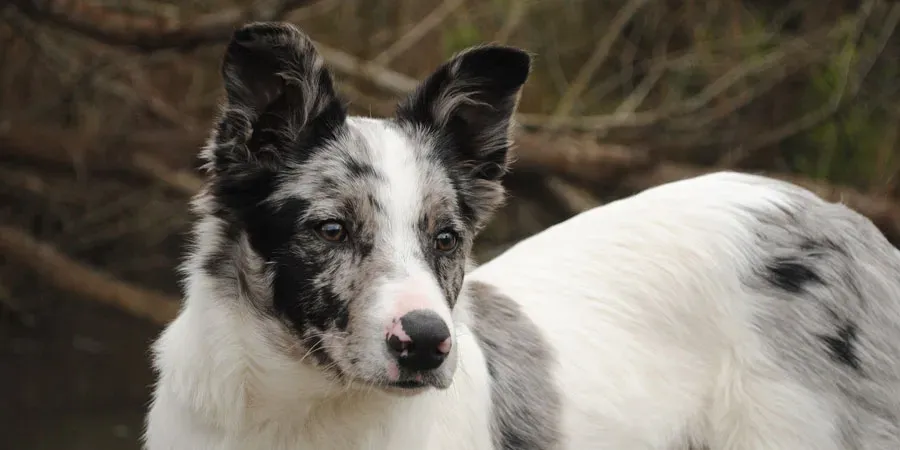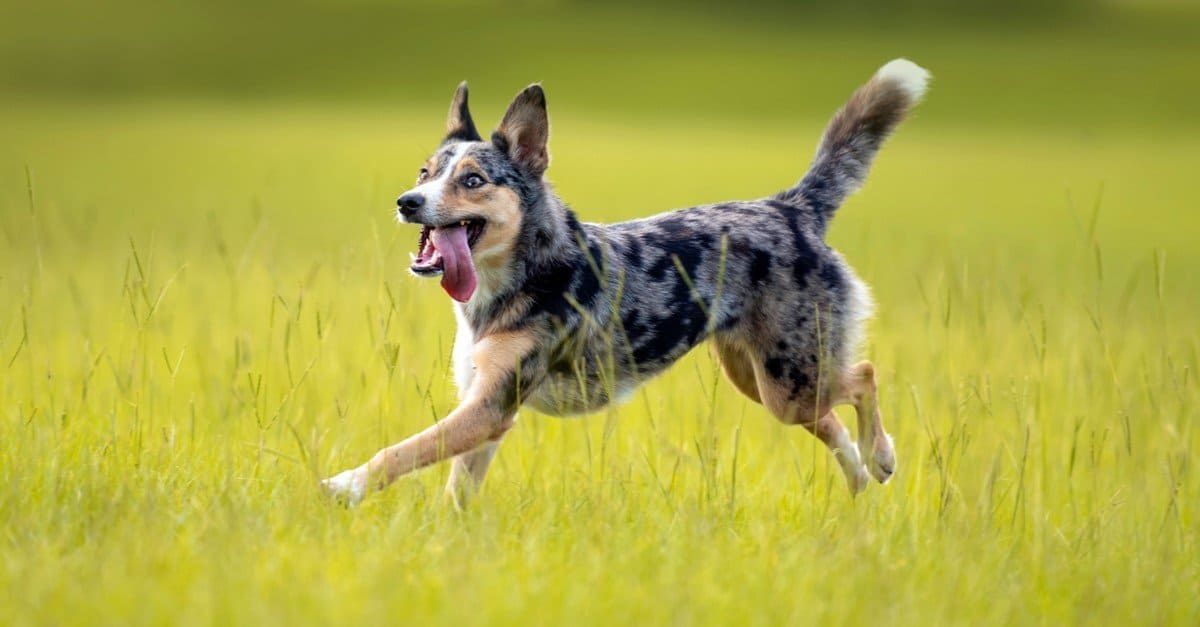The Koolie, also known as the Australian Koolie or German Koolie, is a highly versatile and intelligent dog breed. Originating in Australia, this breed is renowned for its exceptional herding skills and loyal nature. Let's delve into the details of what makes the Koolie a remarkable breed.

With a rich history of working alongside shepherds and stockmen, the Koolie breed has been a crucial part of Australian farming for centuries. It is believed to have been developed from a mix of Collies, Border Collies, and other herding breeds. This ancestry contributes to its exceptional herding abilities and strong work ethic.
In terms of physical characteristics, Koolies typically have a medium-sized, well-muscled body and a moderate energy level. They have a coat that can vary in length and texture, with color patterns ranging from solids to merle patterns. These variations give Koolies a unique and eye-catching appearance. When it comes to temperament, Koolies are known for their intelligence, agility, and eagerness to please. They are highly trainable and excel in various dog sports and activities.

This breed thrives on mental stimulation and physical exercise. To ensure a well-rounded and obedient Koolie, proper training and exercise are essential. Positive reinforcement methods and consistency work best for this breed. They require daily mental and physical challenges to prevent boredom and engage their active minds. In terms of health, the Koolie is generally a hardy breed with few breed-specific health issues. Regular veterinary check-ups, a nutritious diet, and proper exercise are crucial for maintaining their overall well-being.
Owning a Koolie has its pros and cons. On the positive side, this breed is incredibly intelligent, loyal, and adaptable to various environments. They make great companions for active individuals or families who can provide them with the mental and physical stimulation they need. However, their high energy levels and herding instincts may not suit everyone's lifestyle or living situation. If you are considering adding a Koolie to your family, it is important to find a reputable breeder or consider adopting from a rescue organization. Proper research and understanding of the breed's needs will ensure a happy and fulfilling partnership with your Koolie companion.
Key takeaway:
- Koolie: A versatile herding breed: The Koolie is a highly versatile herding dog known for its intelligence and agility. It has a long history as a working dog, being skilled in herding livestock and performing various tasks on farms.
- Physical characteristics of the Koolie: The Koolie is a medium-sized dog with a well-muscled body and a wide variety of coat colors and patterns. They have a unique "merle" pattern, which gives them a distinct and eye-catching appearance.
- Koolie's temperament and personality: Koolies are known for their high energy levels, intelligence, and loyalty. They are highly trainable and make excellent working dogs or active companions. However, they require mental stimulation and plenty of exercise to prevent boredom and behavioral issues.
What is a Koolie?
A Koolie is a breed of working dog that originated in Australia. So, you might be wondering, "What is a Koolie?" Well, let me tell you. They are known for their intelligence, agility, and herding abilities. Koolies have a medium-sized, muscular build and a short coat that comes in a variety of colors including red, blue, and black. These amazing dogs are highly versatile and excel in tasks such as herding livestock, obedience training, and even participating in dog sports. If you are considering getting a Koolie, it's important to be prepared for their high energy levels and the need for regular mental and physical stimulation. Pro-tip: Provide plenty of interactive dog toys and exercise opportunities to keep them happy and fulfilled.

History and Origins of the Koolie Breed
The history and origins of the Koolie breed can be traced back to Australia, where it was developed for herding livestock. The breed is believed to have descended from Collies and other working dogs brought by early European settlers. Koolies are known for their intelligence, agility, and versatility, making them excellent herding dogs. They have also become popular in dog sports such as obedience and agility competitions. Fun fact: The Koolie is recognized as a breed by the Working Koolie Council of Australia and has gained recognition in other countries as well.
Physical Characteristics of the Koolie
The Koolie is a breed of dog that is known for its distinctive physical characteristics. The Koolie has several key features that set it apart:
- Appearance: The Koolie has a medium-sized, athletic build with a well-defined muscular structure, making it physically impressive.
- Coat: This breed has a dense and weather-resistant short to medium-length double coat, enhancing its physical attributes.
- Color: Koolies come in a variety of colors, including red, blue, black, and chocolate. They can also have merle or speckled patterns, adding to their unique physical appearance.
- Eyes: The Koolie's eyes are typically almond-shaped and can come in various colors, such as brown, blue, or a combination of both, which further contribute to its distinctive physical characteristics.
- Tail: Koolies have a naturally long tail, which is often carried low when they are at rest but raised when they are alert or excited, accentuating their physical presence.
The Koolie dog breed originated in Australia and was primarily developed for herding livestock. With their agility, endurance, and exceptional herding abilities, Koolies have become valued members of many farming communities around the world, showcasing their remarkable physical characteristics.
Temperament and Personality Traits of the Koolie
The temperament and personality traits of the Koolie breed make them highly adaptable and intelligent working dogs. Koolies are renowned for their loyalty and obedience, showcasing excellent herding skills and excelling in various dog sports like obedience and agility. Indicative of their versatility and energy, Koolies thrive when provided with ample mental and physical stimulation. They exhibit quick learning abilities and demonstrate high responsiveness to training. Notable for their affectionate nature, Koolies are excellent choices as family pets. However, their herding instincts and abundant energy levels demand an active and dedicated owner.
Training and Exercise Needs of the Koolie
When it comes to the training and exercise needs of the Koolie, it is important to note that they are an active breed that requires regular mental and physical stimulation. Excelling in various activities such as agility, herding, and obedience training, Koolies benefit from daily walks and playtime to keep them happy. To stimulate their intelligent minds, engaging in interactive games like fetch or teaching them new tricks is highly recommended. Moreover, Koolies thrive in environments where they have ample space to run and play. Therefore, providing structured training sessions along with regular exercise will ensure a well-rounded and content Koolie.
What is the Best Training Approach for a Koolie?
The best training approach for a Koolie is one that emphasizes positive reinforcement and consistency. Koolies are highly intelligent and responsive dogs, making them well-suited to training. By incorporating treats, praise, and playtime as rewards, you can motivate them to learn and obey commands. Establishing clear rules and boundaries from the beginning and maintaining patience and calmness during training sessions is essential. Consistency is key, as Koolies thrive on routine. To keep their minds stimulated and prevent boredom, training should be ongoing throughout their lives. By utilizing positive reinforcement and maintaining a consistent training routine, you can assist your Koolie in becoming a well-behaved and obedient companion.
How Much Exercise Does a Koolie Require?
How Much Exercise Does a Koolie Require? As an active and energetic breed, Koolies require a significant amount of exercise to stay happy and healthy. Here are some guidelines for determining how much exercise a Koolie needs:
- Daily exercise: Koolies should have at least 1-2 hours of physical activity every day to prevent boredom and destructive behaviors.
- Mental stimulation: In addition to physical exercise, Koolies thrive with mental stimulation such as puzzle toys, obedience training, and agility courses.
- Varied activities: Engage Koolies in a variety of activities, including fetching, swimming, hiking, and running.
- Social interaction: Koolies also benefit from socialization with other dogs, so playdates or trips to the dog park are recommended.
Remember to tailor the exercise routine to your Koolie's age, health, and individual needs. Consult your veterinarian for specific recommendations.
Health Issues and Care for the Koolie
Health issues and care for the Koolie breed should always be a top priority for owners. Ensuring their overall well-being requires regular vet check-ups. It is crucial to address common health issues in Koolies such as hip dysplasia, epilepsy, and eye problems. Additionally, it is important to provide regular exercise to keep them mentally and physically stimulated. Grooming routines should include regular brushing to maintain their coat, and dental care should not be neglected to prevent dental issues. As a pro-tip, interactive toys and puzzles should be provided to provide mental stimulation and prevent boredom, ultimately promoting a happy and healthy Koolie.

Pros and Cons of Owning a Koolie
Owning a Koolie, an Australian herding dog, comes with its own set of advantages and disadvantages.
Pros:
- One of the pros of owning a Koolie is their high intelligence and trainability, which allows them to excel in dog sports and obedience training.
- Additionally, Koolies are energetic and thrive on physical activity, making them an ideal companion for individuals or families who lead an active lifestyle.
- Another advantage of Koolies is their versatility, as they can easily adapt to various environments and lifestyles.
Cons:
- On the downside, Koolies require mental stimulation and regular exercise to prevent boredom and destructive behavior.
- Moreover, due to their strong herding instinct, they may try to herd children or other pets within the household.
- Koolies may also exhibit reserved or wary behavior towards strangers, hence early socialization and training are necessary to overcome this.
Finding a Koolie Puppy or Rescue
- Research: Start your search for a Koolie puppy or rescue by gathering information about breeders or rescue organizations in your area who have these adorable dogs available.
- Contact: Reach out to the breeders or rescue organizations to inquire about the availability of Koolie puppies or rescues that may suit your preferences.
- Visit: Take the time to schedule visits to meet the Koolie puppies or rescues in person, allowing you to assess their health and temperament firsthand.
- Interview: During your visits, don't hesitate to ask the breeders or rescues questions about the Koolie breed, their breeding practices, and the background of the puppies or rescues.
- Health Check: Prioritize the well-being of the puppies or rescues by ensuring they have received proper vaccinations and health checks.
- Decision: Once you have gathered all the necessary information, make an informed decision based on the compatibility and suitability of the Koolie puppy or rescue for your lifestyle and family.
- Adoption Process: Follow the adoption process set by the breeder or rescue organization to bring your chosen Koolie puppy or rescue home.
Frequently Asked Questions

What is the history of the Koolie breed?
The Koolie breed originated in the early 1800s and was initially mistaken for a German Collie. However, there is no German Collie breed according to the Germans. The name of the breed has caused arguments between those who want to keep the name as German Coolie and those who want to use the name Australian Koolie to acknowledge its Australian origins. The breed was originally known as "The Germans Koolie" but was later shortened to German Koolie. The word "Collie" was mispronounced as "Koolie" by an Alpine German farmer, leading to the confusion of the two names.
What colors and patterns do Australian Koolies come in?
Australian Koolies come in various colors and patterns, including red or blue merle, solid red or black, bi-color (red and white or black and white), tricolor (including merle), and black and tan or red and tan. They can have different coat lengths and may or may not have feathers on their legs.
What is the primary purpose of Koolies as a breed?
Koolies are primarily a working breed, bred for stamina, endurance, and trainability. They are natural herders and can work with various types of livestock, including sheep, cattle, goats, horses, buffalo, and fowl. They are also used in service, sports, and as companions.
Are Koolies good with other animals and children?
Koolies are generally not dog-aggressive and can tolerate other species if introduced at a young age or handled by experienced owners. They are devoted to children but caution should be exercised, and no child should be left unattended with the dog.
What are the common eye colors in Koolies?
While Koolies used to commonly have one or two blue eyes, breeding practices have changed to avoid the merle gene, which can cause blind or deaf puppies. As a result, blue eyes are now less common in Koolies, with brown or black eyes being the most common.
What are some physical characteristics of Koolies?
Koolies have well-muscled bodies, flat outer coats, and a rain-resistant undercoat. They can have a white undercoat and white markings. The coat lengths can vary, with some Koolies having medium or long hair. They come in various colors and patterns as mentioned earlier.






